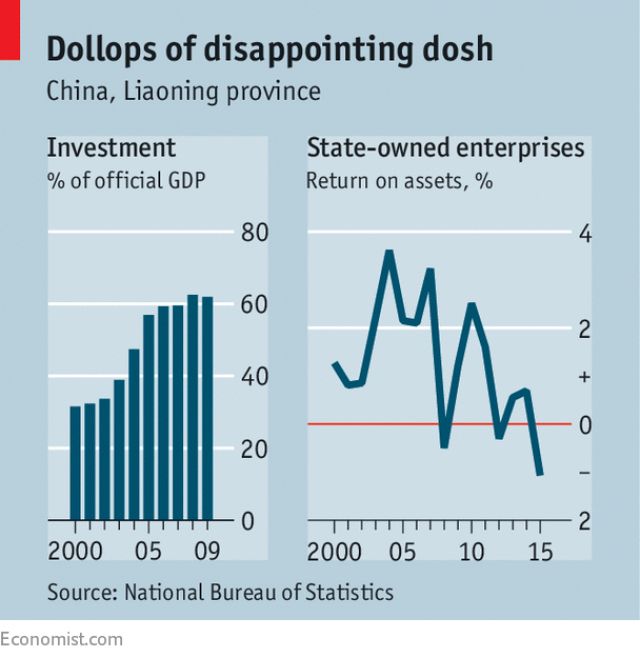正文
Mao made the north-east the centre of heavy industry. It still contains many of China’s largest makers of cars, aircraft and machine tools. In 1978, on the eve of Deng Xiaoping’s economic opening, Liaoning, the most populous of the trio, had the third-largest economy among mainland China’s 31 provinces. Its GDP was 20% bigger than that of Guangdong, the southern province with the biggest population. But 40 years of rapid national growth have left the north-east lagging behind. By 2016 Liaoning had fallen to 14th among provinces by income and had only one third of Guangdong’s GDP. In 1978-2016 its share of China’s output fell by more than half.
As long ago as 2003 a worried national government drew up a plan “to revitalise the old north-east industrial bases”. It did so by vastly increasing state investment, which jumped from 30% of regional GDP in 2000 to 60% five years later. Even this was not enough. In 2016 the government ladled out another vast dollop of money.

Three unusual features account for some of the region’s problems. First, Maoist planning left it more dependent on state-owned enterprises (SOEs) than other areas. In China as a whole 17% of industrial jobs are in SOEs. In Liaoning the share is 40%; in Heilongjiang 55%. These firms are inefficient and many are unprofitable. Houze Song of the Paulson Institute, a think-tank, calculates that the return on assets of Liaoning’s SOEs fell from 3% in the mid 2000s to minus 1% in 2015—ie, they were losing money (see chart).
Second, the region, which has 109m people, is ageing fast, even by Chinese standards. At 39.2 years, Liaoning’s median age (the point at which half the population is older, half younger) is the oldest in the country. The north-eastern provinces have a fertility rate—a measure of how many children women are likely to have—below one. The only other provincial-level areas that have such ultra-low fertility are the cities of Beijing, Shanghai and Tianjin.
The north-east is losing its best and brightest. Jiang Ping graduated in 2015 from the prestigious Number 3 High School in Harbin, the capital of Heilongjiang. She, along with 19 of her 47 classmates, left for universities in Beijing. All of them expect to stay in the capital when they graduate. In contrast, all but one of her father’s high-school classmates live and work in Harbin. The Harbin Institute of Technology is one of China’s top engineering universities. Only 3% of its alumni stay in the province.










